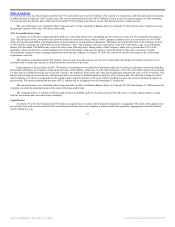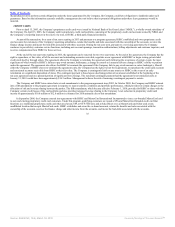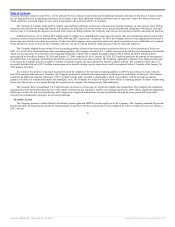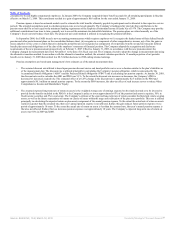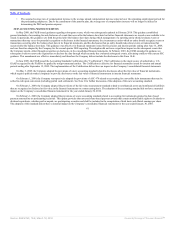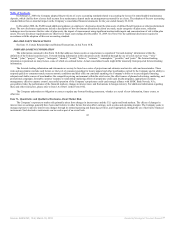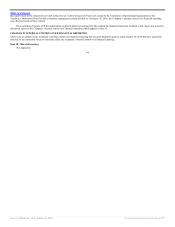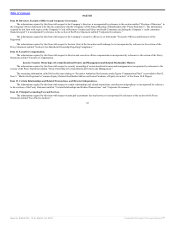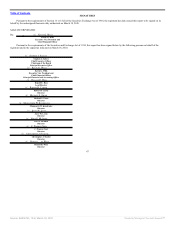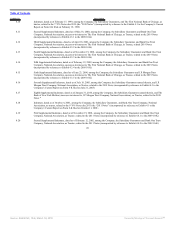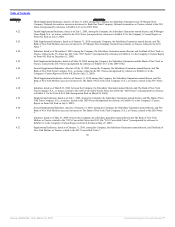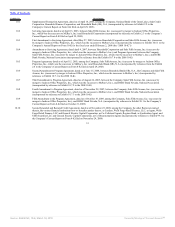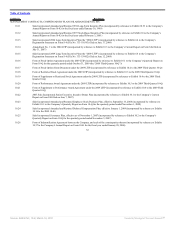Saks Fifth Avenue 2009 Annual Report Download - page 45
Download and view the complete annual report
Please find page 45 of the 2009 Saks Fifth Avenue annual report below. You can navigate through the pages in the report by either clicking on the pages listed below, or by using the keyword search tool below to find specific information within the annual report.
Table of Contents
management program in order to manage the costs and risks associated with various financial exposures. The Company does not enter into derivative instruments
for trading purposes. The Company is exposed to interest rate risk primarily through its borrowings under its revolving credit facility.
Based on the Company’s market risk sensitive instruments outstanding at January 30, 2010, the Company has determined that there was no material
market risk exposure to the Company’s consolidated financial position, results of operations, or cash flows as of such date.
Item 8. Financial Statements and Supplementary Data.
Information called for by this item is set forth in the Company’s Consolidated Financial Statements and supplementary data contained in this report
beginning on page F-1.
Item 9. Changes in and Disagreements with Accountants on Accounting and Financial Disclosure.
None.
Item 9A. Controls and Procedures.
DISCLOSURE CONTROLS AND PROCEDURES
Under the supervision and with the participation of the Company’s management, including the Chief Executive Officer and Chief Financial Officer, the
Company conducted an evaluation of the effectiveness of its disclosure controls and procedures (as such term is defined in Rules 13a-15(e) and 15d-15(e) under
the Exchange Act) as of the end of the period covered by this report. Based on this evaluation, the Company’s Chief Executive Officer and Chief Financial
Officer concluded that the Company’s disclosure controls and procedures were effective as of such date. The Company’s disclosure controls and procedures are
designed to ensure that information required to be disclosed by the Company in the reports it files or submits under the Exchange Act is recorded, processed,
summarized and reported within the time periods specified in the SEC’s rules and forms and that such information is accumulated and communicated to
management, including the Chief Executive Officer and Chief Financial Officer, to allow timely decisions regarding required disclosure.
MANAGEMENT’S REPORT ON INTERNAL CONTROL OVER FINANCIAL REPORTING
Management of the Company is responsible for establishing and maintaining adequate internal control over financial reporting, as such term is defined in
Exchange Act Rules 13a-15(f) and 15d-15(e). The Company’s internal control over financial reporting is designed to provide reasonable assurance regarding the
reliability of financial reporting and the preparation of financial statements for external purposes in accordance with generally accepted accounting principles. A
control system, no matter how well designed and operated, can provide only reasonable, not absolute, assurance that the control system’s objectives will be met.
The design of a control system must reflect the fact that there are resource constraints, and the benefits of controls must be considered relative to their costs.
Further, because of the inherent limitations in all control systems, no evaluation of controls can provide absolute assurance that misstatements due to error or
fraud will not occur or that all control issues and instances of fraud, if any, within the Company have been detected. The design of any system of controls is
based in part on certain assumptions about the likelihood of future events, and there can be no assurance that any design will succeed in achieving its stated goals
under all potential future conditions.
Under the supervision and with the participation of the Company’s management, including the Chief Executive Officer and Chief Financial Officer,
management of the Company conducted an evaluation of the effectiveness of the Company’s internal control over financial reporting as of the end of the period
covered by
43
Source: SAKS INC, 10-K, March 18, 2010 Powered by Morningstar® Document Research℠


